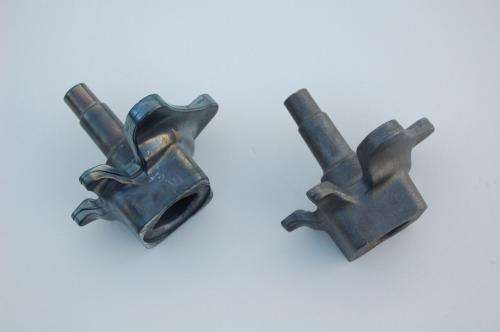The manufacturing of auto parts is reduced to a single step

Following years of research, the technology involving thixoforming, in other words, the shaping of metals in a semi-solid state, is beginning to yield results. CIC marGUNE, the Co-operative Research Centre for High-performance Manufacturing, is exploring the possibility of modifying the current process to manufacture parts for the automotive industry, thanks to thixoforming technology. This research is being conducted in collaboration with CIE-Legazpi and Mondragon University.
The current process to manufacture parts for the automotive industry usually consists of three or four steps. CIC marGUNE, CIE-Legazpia and Mondragon University are exploring the possibility of modifying this process by basing it on thixoforming technology. "The aim is to produce the final part in a single step, which would bypass the whole process in between," pointed out Mikel Intxausti of the company CIE-Legazpi.
From the lab to industry
As yet there is no manufacturer that uses this process. That is why the engineer Jokin Lozares is working with a clear aim in mind in the laboratory of Mondragon University: to be able to transfer thixoforming from the laboratories to industry. On a laboratory scale they have already managed to reduce to a single step what in industry currently requires three or four.
"Thixoforming technology is not a new technology; it has been worked on for many years but until now it has not been possible to make sufficient progress," said Iñigo Loizaga, Chairman of CICmarGUNE and coordinator of the line of research.
Thixoforming is a process in which the material is kept between a liquid and solid state and is shaped in that semi-solid state. All this offers certain advantages with respect to the conventional method of forging. Firstly, savings are made in terms of material. "To produce the same part, thixoforming technology uses about 20% less material than forging, since no surplus material is obtained in the new process, and the final part with the desired geometry is obtained directly," explained Jokin Lozares. "What is more," he added, "a process that takes three or four steps right now in industry is cut to a single step, and allows infinitely more complex geometries to be achieved."
Until now, the experimental tests have been focussing on a car part that is fitted to the car's rear suspension. Specifically, it is the part that is attached to the wheel and the car's disc brake, the part that ensures that the rear wheel turns. "We can see that even by coming up with a process in which we want to break the equipment to see how long it lasts, the equipment is lasting longer than expected. As yet it is not enough to be a totally industrial process, but we have to go on conducting research and advancing, because thixoforming appears to have a future," pointed out Loizaga. "We are even looking at the possibility of working with materials more advanced than steel with the aeronautical industry in mind mainly," he added.
Provided by Elhuyar Fundazioa


















